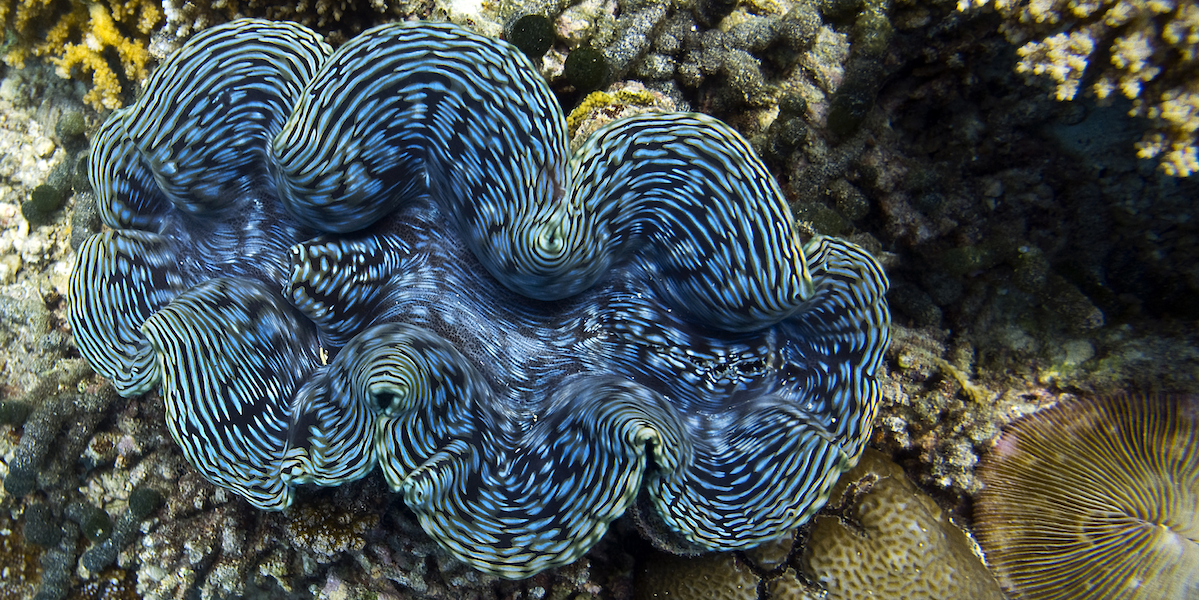
Penn researchers are collaborating to study how giant clams convert sunlight into energy, which could lead to more efficient production of biofuel. Photo credit: Malcolm Browne
The unique properties of giant clams are serving as inspiration to improve biofuel production.
Giant clams, which can grow up to three feet long and weight hundreds of pounds, anchor themselves to coral reefs in tropical waters in the Indian and Pacific oceans.
The clams are iridescent and appear to sparkle before the naked eye due to the lustrous cells on the surface of the clam that scatter bright sunlight.
When the light is distributed evenly among the thick layer of algae living inside the clam, the algae quickly converts the light into energy. This has inspired a team from the University of Pennsylvania to try and create a similar system to produce biofuels.
“What those sparkly cells are doing is causing light to propagate very deeply into the clam tissue and spread out,” Alison Sweeney, Ph.D., an assistant professor of physics in the Penn School of Arts and Sciences, said in a statement.
The researchers tried to mimic the system by abstracting the principles of the clam’s process to create a material that works similarly.
To accomplish this, they devised a method of synthesizing nanoparticles and added them to an emulsion—a mixture of water, oil and soapy molecules called surfactants—to form microbeads that mimic iridocytes, the cells responsible for solar transforming in the clams.
“It’s very efficient and it’s very difficult to achieve,” Shu Yang, Ph.D., a professor of materials science and engineering in the School of Engineering and Applied Science, said in a statement. “People are trying to do this by designing nanoparticles but you need to do a lot of synthesis and find ways to precisely control their size, shape and optical properties, which becomes complicated and expensive.
“Our method is both simple and inexpensive and at the same time achieves better results than all these other systems,” she added.
The researchers will now try to mimic the organization of the algae within the clams by growing algae in gel pillars. They then plan on marrying their artificial iridocytes and the algae and measure the system to see if it can produce fuel to the same high efficiencies as the giant clam.
The method could eventually be used for photosynthesis to enhance the efficiency of biofuel production, as well as for generating, storing, or preventing heat to allow for better temperature control in buildings.
“It’s exciting to see the clever, non-intuitive ways that life has come up with to solve problems,” Sweeney said. “Typically, evolution is a lot more clever than human engineers, and the trick is to ask smart questions about what design problem is being solved in each evolutionary case.
“It’s figuring out these really clever design strategies that you wouldn’t get to from a top-down human approach,” she added.
The study was published in Advanced Materials.




